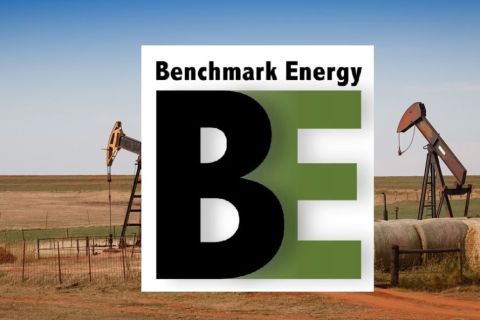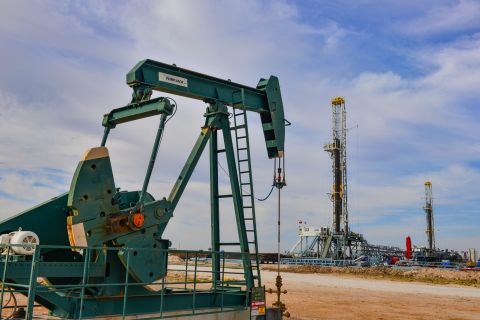By Jeff Huddleston As you read this, on Day 66 of the tragic oil spill in the Gulf of Mexico (GoM), we find ourselves in uncharted waters. The US oil and gas industry has never faced a single event or catastrophe of this magnitude or the far-reaching and profound economic, environmental, and political fallout that comes with it – and it’s not over yet. Let’s take a look at where we stand now. The US $20 billion that BP has agreed to fund, under pressure from the US government, will likely not be enough. The true economic damages may be nearly impossible to quantify, including both the current and future impacts of the offshore drilling moratorium, which is expected to remain tied up in court for the foreseeable future, and new safety requirements for deep and shallow water drilling issued by the Interior Department. Offshore drilling is much more technically complex than onshore work, and requires more logistical support assets such as helicopters, supply and personnel boats, remotely operated vehicles, and special offshore construction assets, among others. Many of the companies in this space are relatively small and unknown compared to the large E&P and drilling companies they serve. Within the industry, the negative impact from the moratorium will be felt disproportionately by these support companies who are heavily, if not exclusively, tied to exploration and production work in the GoM. Many of them have most likely expanded and financed their fleets recently due to new contracted work that is now cancelled or in limbo. As the industry faces unprecedented uncertainty about its future in the GoM, some E&P companies have exercised (Cobalt), or are attempting to exercise (Anadarko), force majeure clauses to break contracts with drilling companies, increasing the speed at which the moratorium is felt by the support companies. For now, some lucky support companies have reported that they have been able to offset the lost work with contracts from BP to assist with spill cleanup. Bristow Group reported in Houston Business Journal that seven of its nine helicopters serving the deepwater GoM were released from their contracts due to the moratorium, however the lost revenue was nearly completely offset with new work from BP to support spill cleanup. This temporary lifeline may be enough to carry some companies through to the end of the moratorium, but unfortunately, not all support companies have assets that are needed in the cleanup and containment process. The reality is that the moratorium and the new safety requirements have already negatively impacted companies both within and outside the oil and gas space. If you are a company facing this crunch, you need to take immediate action to preserve cash and make operational adjustments to reallocate resources to other markets, if possible. For example, a friend of mine who works in offshore drilling procurement for a large E&P company is being sent to Africa for the foreseeable future to support ops there. Specifically, now is the time to complete forward-looking cash flow planning to stress-test the business under different and prolonged scenarios, including at least a three- to six-month lag after the moratorium is lifted before drilling activity returns to pre-moratorium levels. This planning should examine the business in monthly intervals looking out at least 24 months and taking into account all interest and debt maturities and capital requirements. A gap in cash flow now may not create an immediate problem, but could create a problem next year if a large debt payment is due. For most businesses, the uncertainty of when the moratorium will ultimately be lifted or called off, as well as when the Interior Department will offer clarity on its new requirements, is almost worse than having to comply with the new rules themselves. Companies are in limbo. It’s difficult to decide how drastic the adjustments need to be without an idea of how long activity will be down in the GoM. Unfortunately, at this point, it is safe to say that the collateral damage from the Deepwater Horizon catastrophe will be significant and will continue to reverberate like earthquake aftershocks. Jeff Huddleston, Conway MacKenzie
Recommended Reading
EIA: Permian, Bakken Associated Gas Growth Pressures NatGas Producers
2024-04-18 - Near-record associated gas volumes from U.S. oil basins continue to put pressure on dry gas producers, which are curtailing output and cutting rigs.
Benchmark Closes Anadarko Deal, Hunts for More M&A
2024-04-17 - Benchmark Energy II closed a $145 million acquisition of western Anadarko Basin assets—and the company is hunting for more low-decline, mature assets to acquire.
‘Monster’ Gas: Aethon’s 16,000-foot Dive in Haynesville West
2024-04-09 - Aethon Energy’s COO described challenges in the far western Haynesville stepout, while other operators opened their books on the latest in the legacy Haynesville at Hart Energy’s DUG GAS+ Conference and Expo in Shreveport, Louisiana.
Mighty Midland Still Beckons Dealmakers
2024-04-05 - The Midland Basin is the center of U.S. oil drilling activity. But only those with the biggest balance sheets can afford to buy in the basin's core, following a historic consolidation trend.
Mesa III Reloads in Haynesville with Mineral, Royalty Acquisition
2024-04-03 - After Mesa II sold its Haynesville Shale portfolio to Franco-Nevada for $125 million late last year, Mesa Royalties III is jumping back into Louisiana and East Texas, as well as the Permian Basin.





